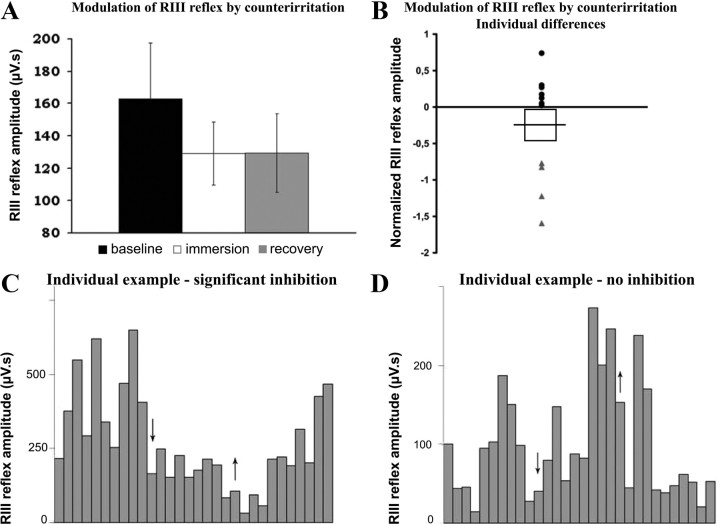Figure 3.
RIII reflex amplitude during baseline and counterirritation (immersion) and after counterirritation (recovery). A, The counterirritation stimulus produced a decrease of RIII reflex amplitude during and after counterirritation but the effect was not significant (p > 0.1). B, Individual differences in RIII reflex modulation during counterirritation. Two subgroups are evident showing significant inhibition of RIII (gray triangles) and no inhibition (black dots). C, D, Individual examples of RIII reflex modulation: arrows indicate the beginning and the end of counterirritation. In the first subject, RIII reflex amplitude was decreased during counterirritation and slowly recovered to reach the baseline level at the end of the session (C). In the other subject, RIII reflex amplitude slightly increased during counterirritation and decreased to a stable level during recovery (D).

